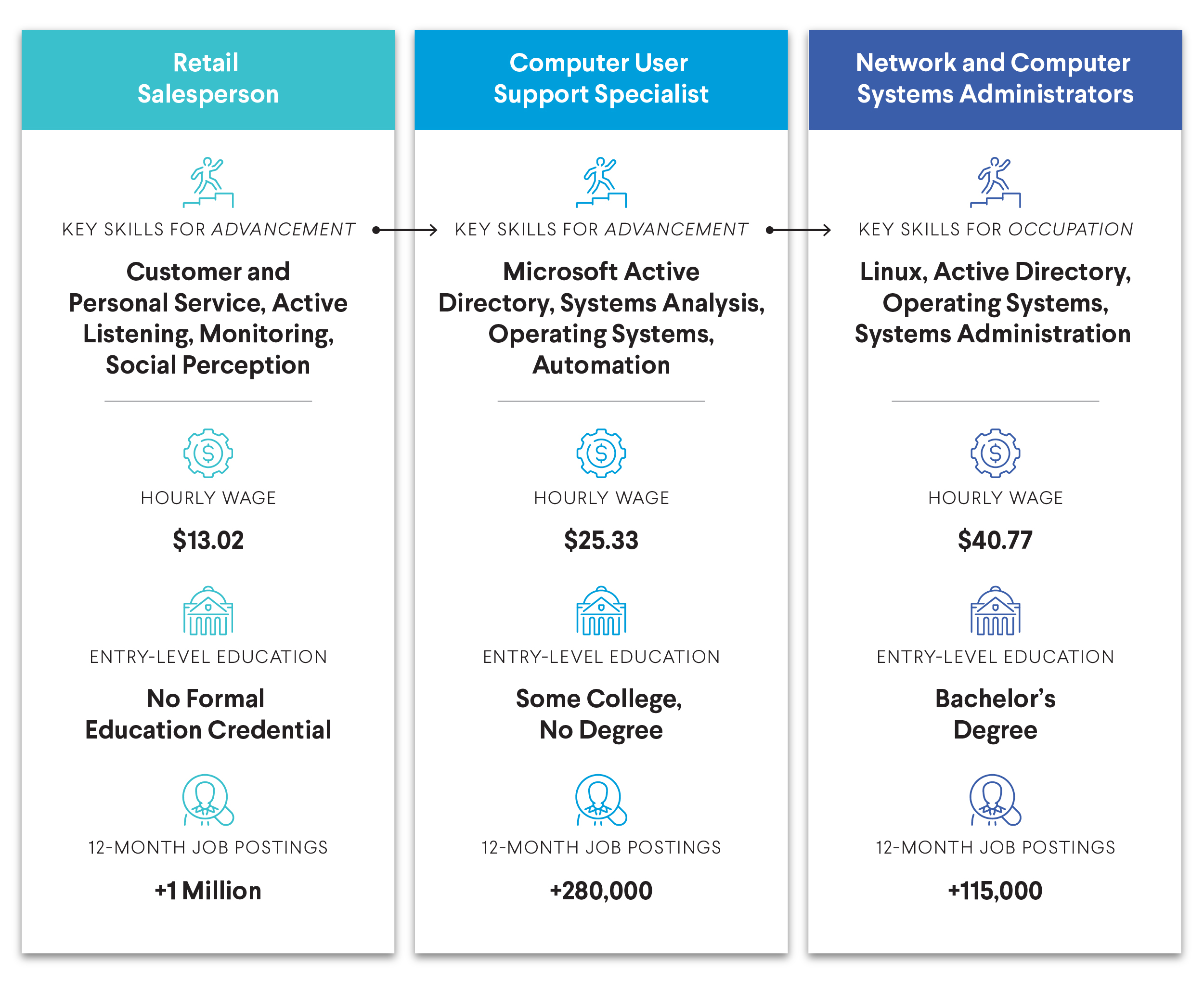In 2021, we witnessed a troubling trend for young people who reside in low-income communities: Although the economy opened up and young people started rejoining the labor market, they are now concentrated in low-wage jobs with few opportunities for advancement.
Meanwhile, in the field of young-adult talent development, the community-based organizations (CBOs) that have long been a lifeline for unemployed and out-of-school youth are figuring out how to navigate an unpredictable and rapidly changing labor market.
In JFF’s new report How Young Adults Can Advance in a Turbulent Economy, Sara Lamback, Laura Roberts, and I identify four strategies and give clear guidance for each strategy to help young-adult talent developers position their participants for success:
- Use up-to-the-minute labor market data to target high-wage, high-growth jobs in your region.
- Design career pathways based on transferable skills rather than long periods of education or training.
- Improve relationships with employer partners.
- Advocate for public policies that support the economic advancement of young adults.
Throughout the report, we explore the most recent data on young adult hiring and examine a few key questions: In which sectors are young adults being hired? What jobs will pay off in the current economy? How can young-adult talent developers help young adults leapfrog from low-wage work into higher-paying jobs with advancement potential?
We learned that millions of young adults who found work in 2021 landed jobs that don’t cover their basic needs. This is a crisis for these young people, who too often lack pathways to advancement, and for society as a whole, which risks producing a generation of underprepared young people. The strategies outlined in the report offer an opportunity to disrupt this trend and connect more young people with high-wage, high-growth employment options.



